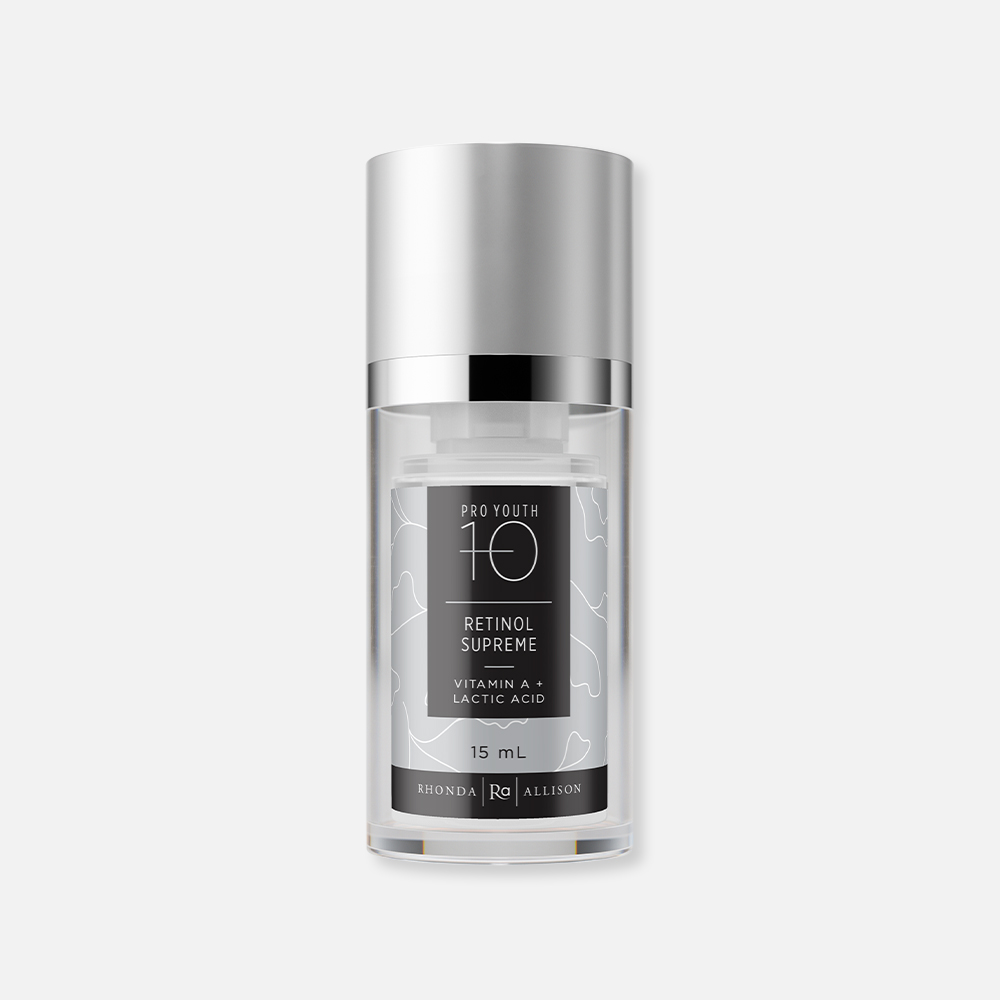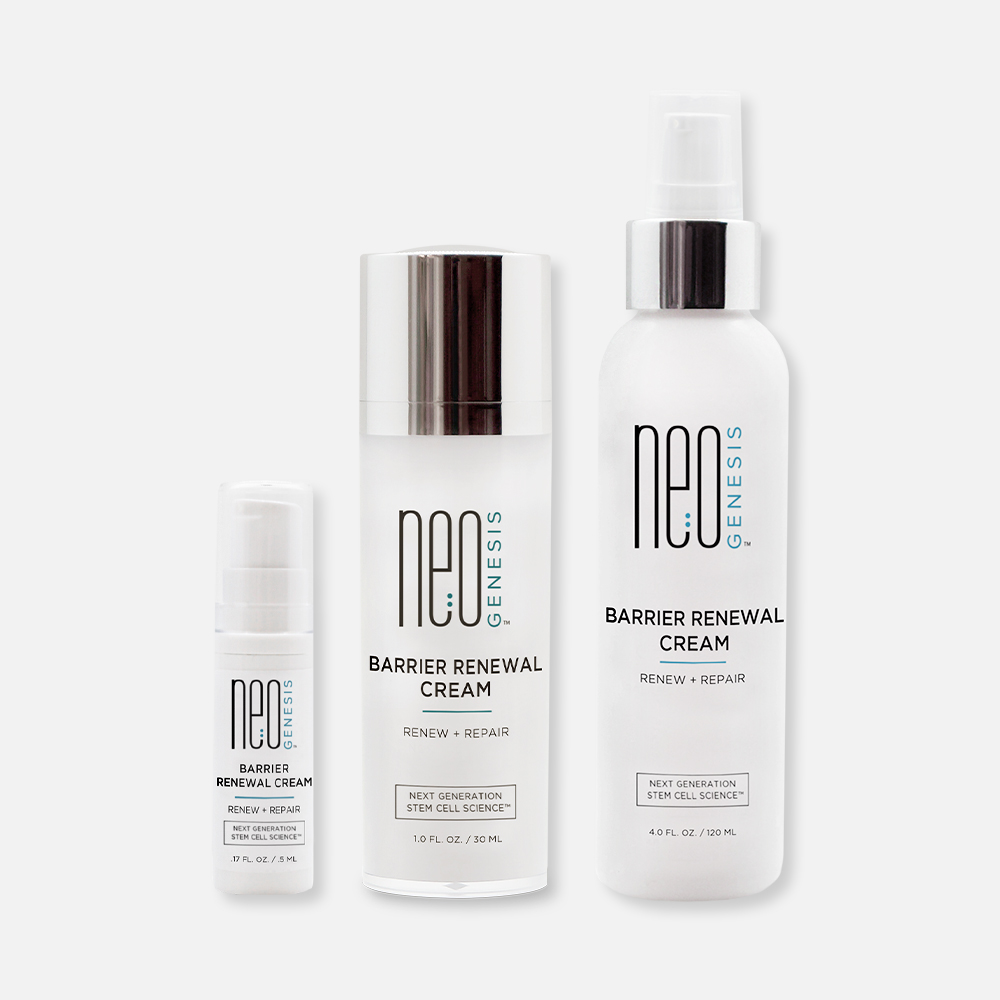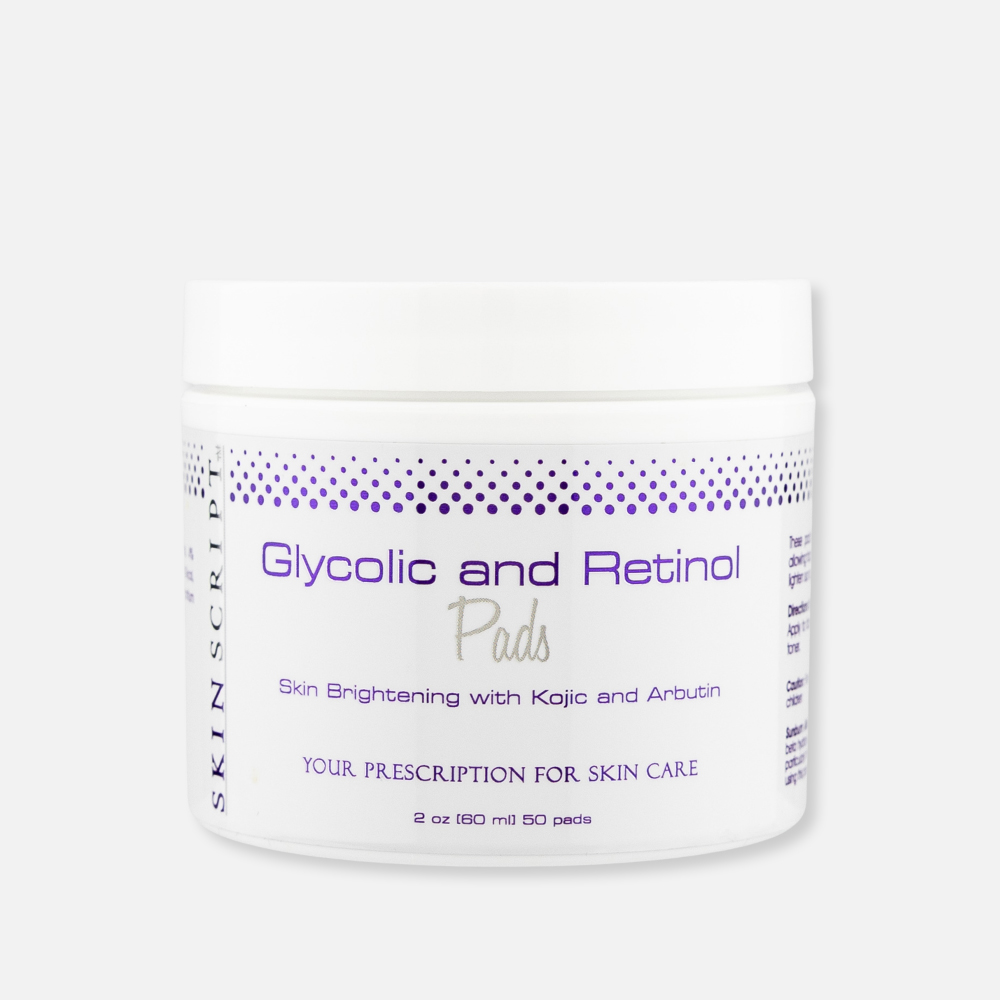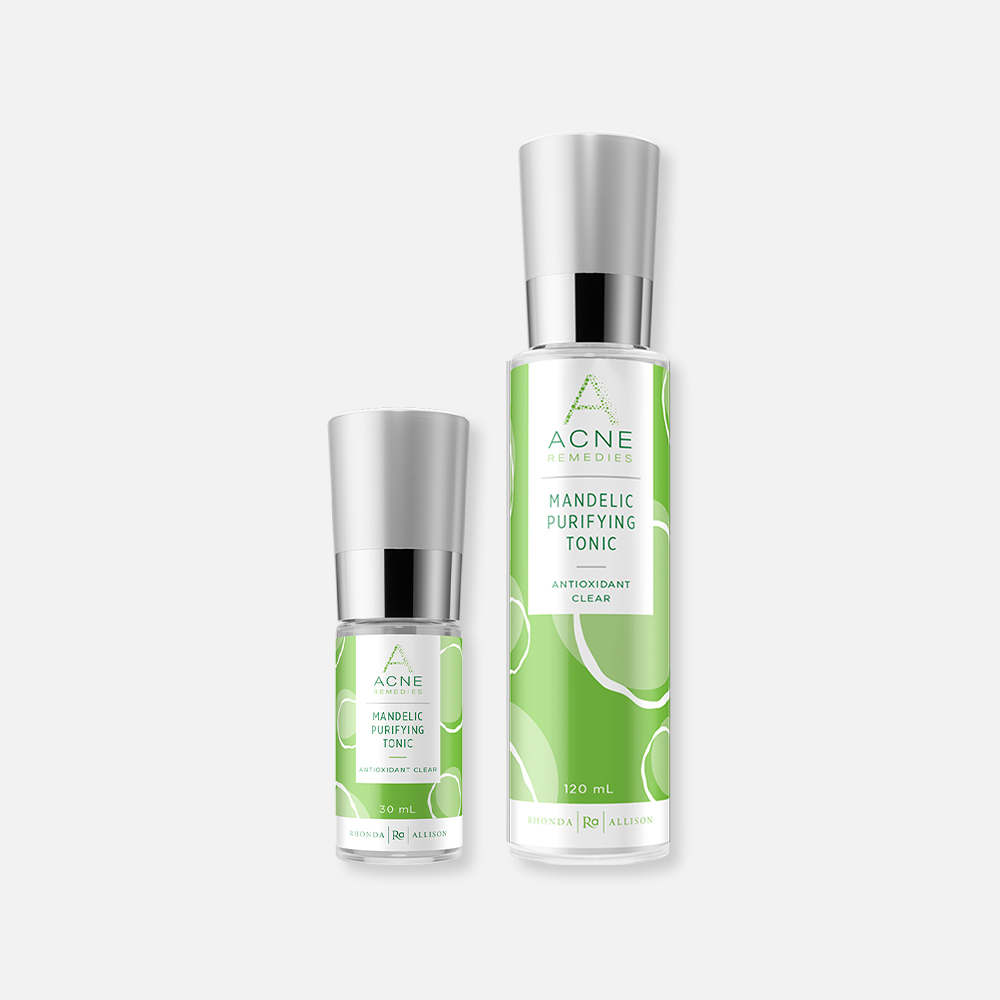
I want you to meet one of my favorite skincare ingredients, a literal fountain of youth that turns back the hands of time at the cellular level: Retinol! A derivative of vitamin A, retinol is part of the retinoid family and has the ability to trick your skin into thinking it’s younger than it is. With age, skin cells begin to behave irregularly and slow down the natural process of skin renewal. This means that there is less collagen available to repair damaged skin than there was when we were younger. As that happens, we begin to see wrinkles and saggy skin appear.
Want to know how you can safely incorporate this powerful rejuvenating tool into your skincare routine? In this blog, I will explain the benefits of various types of retinoids as well as what to watch out for if this is a new ingredient for you. Retinol products aren’t the right choice for everyone. However, there are varying forms and strengths of retinoids that expand our menu of vitamin A options so that nearly everyone can enjoy the benefits. Well, what are we waiting for? Let’s dive in!
- What Is Retinol And What Does It Do?
- Types Of Retinoids
- The Benefits of Retinol, Retinaldehyde, & Bakuchiol
- How To Use Retinol And What To Expect
- Jeana’s Top Retinol Recommendation
- Who Should Not Use Retinoids
What Is Retinol And What Does It Do?
Vitamin A naturally contains both retinoids and carotenoids. The beneficial antioxidants found in orange-colored plants and foods (such as pumpkins) are called carotenoids. Retinoids, on the other hand, stimulate your skin’s production of collagen, skin-plumping hyaluronic acid, and elastin. When applied topically, retinol converts into retinoic acid by enzymes found in our skin.
While the natural rate of skin cell turnover is about 30 days when we are young, this rate drastically slows down as we get older. The 30-day cycle slows down to a 50-60 day cycle! This means that dead skin cells remain on the skin for longer, and fresh skin cells are taking much longer to reach the surface. This is where retinoids come in; they have the ability to accelerate that cycle to about a 10 to 14-day process. This boosted cell turnover makes retinol an important part of clear, youthful skin.
Types Of Retinoids
Vitamin A (aka retinoids) has been a gold-standard skincare ingredient found in anti-aging products for decades. It actively solves texture issues, clears blemishes, firms and lifts skin, and fades dark spots. Retinol, retinaldehyde, and retin-A (pure retinoic acid) are all popular retinoids used in the skincare industry. A newer alternative, bakuchiol, has proven to be a wonderful option for those with sensitive skin who want the benefits of a retinoid without irritation.
Only retinoic acid immediately affects the skin. All other forms must first be processed and converted into retinoic acid by enzymes in the skin. The different forms of retinoids are simply at different stages of this process. Retinyl palmitate converts to retinol, which then breaks down into retinaldehyde, which becomes retinoic acid in its final stage. Most retinoids can be purchased over the counter, except for prescription-strength retinol creams, which must be prescribed and supervised by your dermatologist.
Should You Choose Retin-A?
Retin-A, also known as tretinoin, is the only product made up of pure retinoic acid. Since it doesn’t need to be converted any further, it is the strongest and often most harsh form. Of all forms of vitamin A, it has the worst side effects, including skin peeling, burning, redness, itching, and scaling. Retin-A was originally produced as a treatment for acne because of its very drying and antibacterial nature.
In recent years, it has also been prescribed to older clients with aging concerns. Unfortunately, it can often cause more damage than good because of its very potent nature. This leads to inflammation in the skin and a compromised skin barrier, leaving your skin more susceptible to uneven pigmentation, premature aging, and UV damage.
Why I Prefer Retinol
Retinol is a vitamin A derivative that is naturally produced in the body. When inside a skincare product, enzymes first break it down into retinaldehyde, then retinoic acid. Since it is a form of vitamin A that our skin is already familiar with, it is far more stable than retinaldehyde, meaning it can be used in larger concentrations. The stability of retinol makes it a great option for both acne and healthy aging. Retinol tends to be more exfoliating than retinaldehyde because of its higher concentration. It also pairs well with helpful acids such as lactic acid.
Those with normal to oily skin types will like this form of vitamin A. It will help diminish sebum and oil production, smooth out pores, and exfoliate away dead skin cell build-up. Unlike Retin-A, which typically causes excessive peeling and redness, retinol produces very mild flaking with little to no redness when used properly. The key to the successful use of retinol is to keep the skin nourished and hydrated with a healing serum. Rhonda Allison DNAge Reversal is my go-to for this, with its deeply hydrating and rebuilding ingredients. I also like to finish my nightly retinol treatments with NeoGenesis Barrier Renewal Cream due to its soothing and protective qualities.
When To Choose Retinaldehyde
Retinaldehyde is a newer form of vitamin A to hit the market and is a wonderful solution for sensitive and dry skin types. For years, scientists were unable to utilize this form because it can be highly unstable. Eventually, they found that it worked wonderfully in a lower concentration as a gentle form of vitamin A. Since it doesn’t need to convert through as many stages, retinaldehyde can produce results without as many side effects like dryness and peeling. Those with dry and sensitive skin can use it daily.
Anyone unable to tolerate retinol in the past should consider giving retinaldehyde a try. Due to its gentle nature, it’s not often mixed with any other actives or acids. This makes it less than ideal for acne-prone skin, but perfect for irritated, dry skin. As with all vitamin A products, you should pair it with a replenishing serum to prevent your skin from becoming overly dry.
Bakuchiol: The Natural Retinol Alternative
If you have sensitive skin that has not tolerated retinol well in the past, bakuchiol might be your new best friend. With roots in ancient Ayurvedic medicine, bakuchiol only recently piqued the interest of modern medicine thanks to its powerful anti-inflammatory properties and skin-defending antioxidants. A comparison of retinol and bakuchiol published in the British Journal of Dermatology reveals that bakuchiol provides the same skin-rejuvenating promises as retinol without some of the side effects.
The Benefits of Retinol, Retinaldehyde, and Bakuchiol
- Smooths and refines uneven skin tone and texture
- Exfoliates skin at the cellular level, lifting away dead skin cells
- Repairs cellular structure, strengthening the skin matrix
- Minimizes and slows the appearance of fine lines
- Accelerates the process of skin renewal
- Enhances collagen production
- Brightens skin by breaking up excess melanin, fading dark spots and discoloration
- Regulates oily skin, minimizing breakouts
- Clarifies pores, preventing blackheads, cysts, and pimples
- Prevents the rise of a collagen-digesting enzyme which is triggered by UV exposure
- Diminishes and refines pores
- Increases circulation and blood flow to the skin
- Improves the skin’s hydration levels
With an impressive list of healthy-aging benefits like this, you might be wondering how you can get started. There are many types of retinoids to choose from. Read on to select the right retinoid product for you.
How To Use Retinol And What To Expect
The key to introducing any retinol product into your routine is to take a slow and steady path. While you might be excited to see the many exciting benefits of retinol in your skin, it’s essential to take a gentle approach. Simply put, more retinol is not better. Too much, too fast can cause irritating side effects and leave your skin in a worse state.
The best time of day to use retinol is in the evenings when you won’t be in direct sunlight. Begin adding a gentle form of retinoids slowly into your nighttime routine. Start by applying it about 1-2 times per week to see how your skin responds. Use a pea-sized amount for your entire face and allow the product to absorb for about 15 minutes prior to applying other products. To soothe your skin and reduce the likelihood of uncomfortable side effects, I recommend using a pump of the Rhonda Allison DNAge Reversal layered under your retinol as a buffer and topping off with a hydrating moisturizer or night cream such as NeoGenesis Barrier Renewal Cream.
Jeana’s 3-Step Method For Starting Retinol
For those with non-sensitive skin and those wanting to stimulate faster change in the skin, here is the 3-step method that I recommend:
- Apply a retinol serum every night until you stimulate light flaking or dryness. This indicates that your skin is beginning to heal and you are shedding damaged skin cells. With the onset of flaking, stop using retinol for one week or until the skin has rebounded and stopped peeling. The more damaged the skin, the more peeling you will see as the skin heals. If you don’t experience any dryness or flaking, continue to use your retinol serum 4 to 5 nights per week.
- After initial peeling has subsided, apply retinol 3 nights per week. If you experience dryness or the release of damaged cells again, take a break from your retinol until the skin rebounds and stops peeling.
- Apply your retinol serum twice per week. Most people find that they can stay with twice per week. However, if you experience flaking, stop using your retinol until the skin rebounds and then use retinol once per week. Note: Most people who experience excessive shedding have a compromised barrier and will need to add more moisture to the skin. In this case, NeoGenesis Barrier Renewal Cream must be used over the retinol serum.
What To Expect While Using Retinoids
Every person is unique and it’s important to watch your skin and make adjustments as needed. I’ve had clients with very damaged skin who had to keep working through the shedding cycle for 6 months before their skin stopped flaking. Retinol stimulates healing deep within the dermis and it takes time for complete regeneration. However, your patience and persistence will pay off with healthier, glowing skin.
While using retinoids, you must apply sunscreen every morning and re-apply throughout the day. An SPF of 30 or higher will shield your skin from damaging UV rays!
Jeana’s Top Retinol Recommendations
For my retinol newbies, I recommend that you begin by using the AnteAGE System. This fabulous duo of products is a powerful and holistic skincare solution. It also happens to be perfect for dry, sensitive skin. Once your skin adjusts and you have finished the AnteAGE bottles, my recommendations are as follows:
Sensitive or Dry
- Rhonda Allison “A” Renew + (retinaldehyde) with Rhonda Allison Mandelic Clear Complex
- Skin Script Iconic A (retinaldehyde)
- Hale & Hush Rare Retinal Serum (retinaldehyde)
- AnteAGE System (bakuchiol)
- iS Clinical Retinol+ Emulsion 0.3% (retinol)
Aging or Sun-Damaged
- Rhonda Allison Retinol Supreme (retinol) with DNAge Reversal
- Sorella Facial in a Bottle (bakuchiol)
- AnteAGE System (bakuchiol)
Oily and/or Enlarged Pores
- Rhonda Allison Salicylic “A” Serum (retinol) with DNAge Reversal
- Skin Script Glycolic and Retinol Pads (retinol)
Congested/Blackhead-Prone Skin Types
- Skin Script Glycolic and Retinol Pads (retinol)
Who Should Not Use Retinoids?
Pregnant and Nursing Mothers
While the risks associated with using a topical retinoid product while pregnant are relatively low, the current general recommendation, according to the National Center for Biotechnology Information (NCBI), is to avoid retinoids while expecting. If you’re experiencing skin problems while pregnant, I advise you to sign up for a skincare consultation. Two serums that are pregnancy-safe are Sorella Apothecary Facial in a Bottle, which contains bakuchiol, and Skin Script Beta-Carotene Papain Renewal Serum, which contains beta-carotene.
Rosacea Skin Types
For those with rosacea, it’s a case-by-case basis whether or not you can use retinoids. Some types of retinoids can be used safely; however, I do recommend that you consult with a skincare professional before incorporating retinol into your skincare regimen.
Inflamed Acne
Those with inflamed acne should not start a retinol serum until all inflammation is gone. I recommend a personalized acne consultation for anyone with acne-prone skin looking to incorporate a retinoid product into their skincare routine.
Folliculitis Barbae
Folliculitis barbae is a type of folliculitis affecting the jawline or beard area due to infection with the bacteria Staphylococcus aureus. Retinol will exacerbate folliculitis. A better choice for this condition is Face Reality Mandelic Scrub and Rhonda Allison Mandelic Defense Tonic.
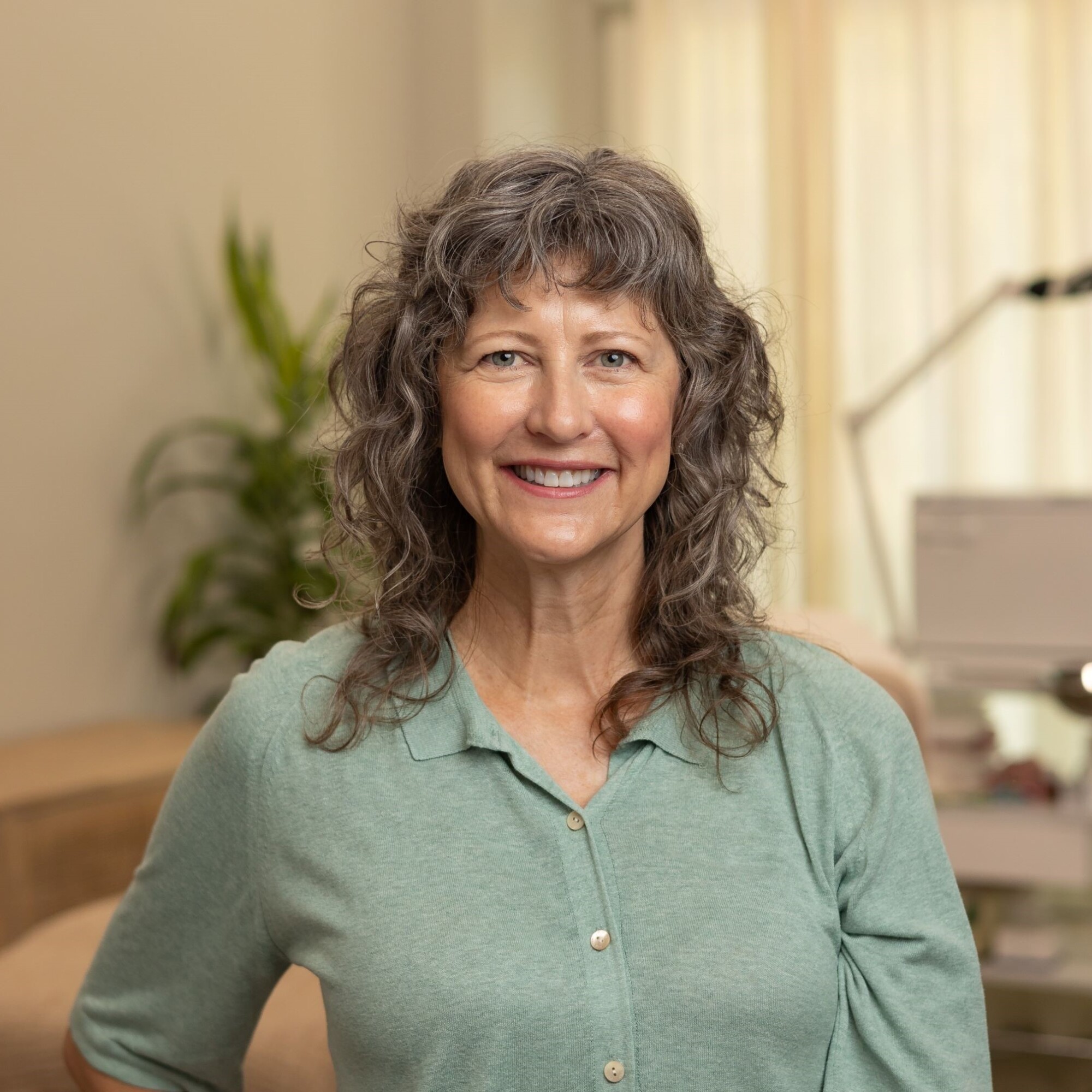
Have questions? Reach out to our team of seasoned estheticians via live chat or sign up for one of our Skincare Coaching Programs to discuss your specific needs. We’ll be here every step of the way!
